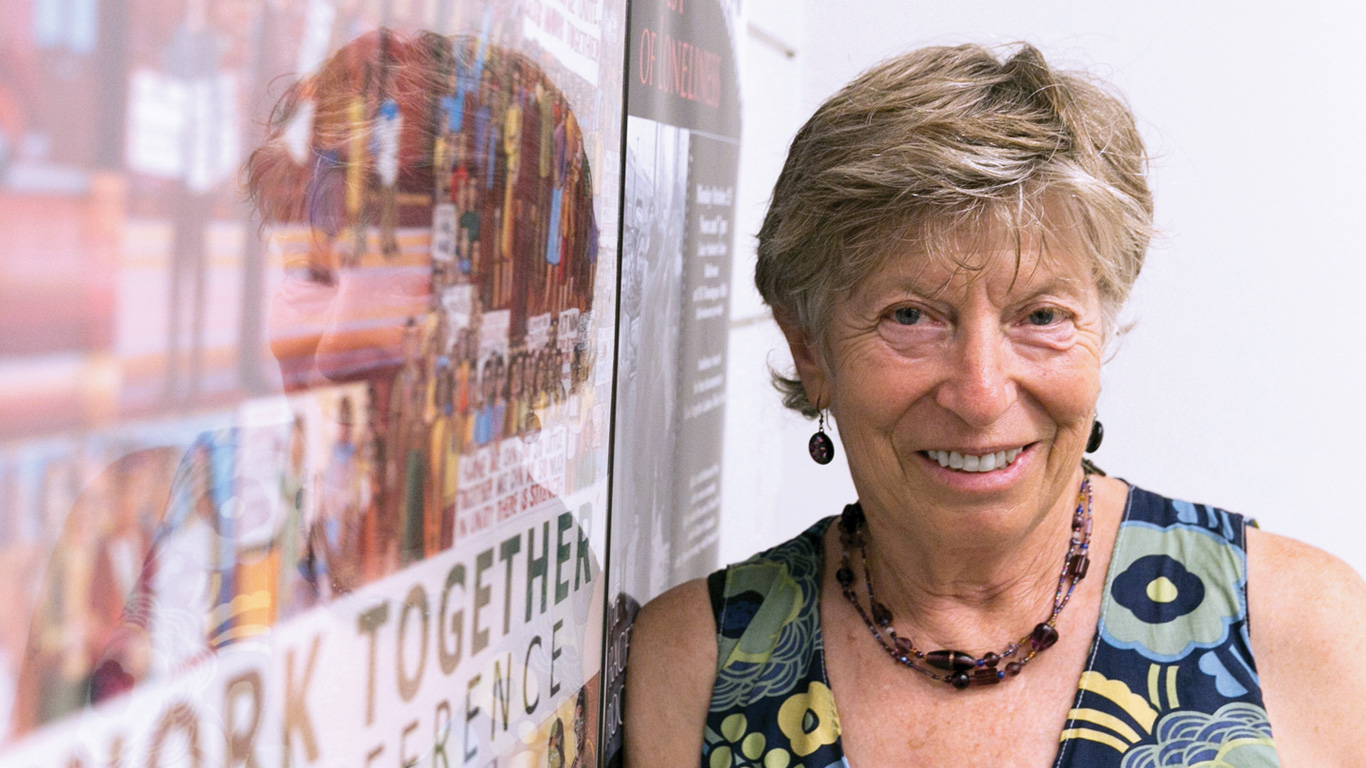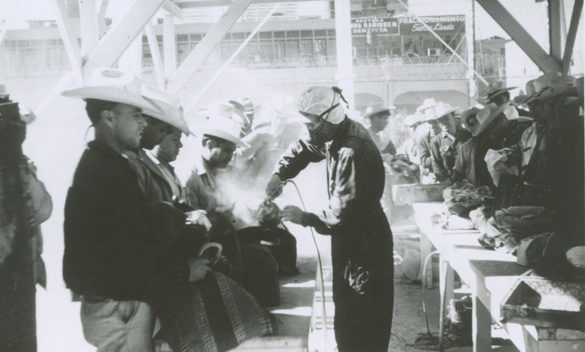
Seven years since its release, “Harvest of Loneliness,” Professor of Interdisciplinary Studies Vivian Price’s award-winning film about the 1940s-1960s farm labor Bracero Program, continues to “deliver a much-needed fact check” regarding the history of immigration from Mexico to the United States. The documentary was screened twice on campus recently as part of the Chicana and Chicano Studies, Department 2017-2018 Film Series at California State University, Dominguez Hills (CSUDH).
“Harvest of Loneliness,” which debuted in 2010 and was co-directed by Price, who also serves as coordinator of the labor studies program at CSUDH, counters the U.S. government’s official story regarding the creation of the Bracero Program–to fill an alleged labor shortage during WWII. Price, and co-director Gilbert Gonzalez, use evidence and testimony to illustrate how the program instead served to counteract major drives organized by the farm worker union, such as the 1941 Limoneira Ranch strike in Santa Paula, and undermine farm worker unionization in the United States.
The film is told in large part by interviews of “Braceros,” who were among the millions of Mexican men who worked from 1942 to 1964 in the Bracero Program. The “temporary contract worker program” led to the largest state-managed migration in history.
The recent screenings of “Harvest of Loneliness” were led by Price, who fielded questions from the audiences to provide an opportunity for discussion and to address the lack of information about the Bracero Program. She sat down with CSUDH Campus News Center to share insights about the history and legacy of the Bracero Program, reactions to the screenings, and its context to current fears and unknowns on campus since the cancellation of the Deferred Action for Childhood Arrivals (DACA) program.

Hidden History
Q: How did the Bracero program last so long given its intent to fill the agriculture workforce during WWII?
A: The program existed not only because the United States government was recruiting Mexican workers, but also because conservative segments of the Mexican government were trying to deter any kind of democratic reform or rebellion in its country. They were willing to see the U.S. as a release valve for people who were basically starving. That helped legitimize the program and helped it become a significant part of the Mexican economy. The U.S. has long supported that conservative element in the Mexican government, and promoted policies that allow the U.S. to utilize Mexican workers as a cheap labor pool.
Q: Since its end, what effect has the Bracero Program had on migration from Mexico?
A: The program laid the foundation for Mexican workers to follow the same path in search of prosperity in the U.S., and as a way to build hope for those who would like to send money to their families back home. That continues today, but many farmers in Mexico remain impoverished due to the North American Free Trade Agreement (NAFTA), and the dumping of cheap subsidized corn and grain that it exported from the United States to Mexico, making it impossible for them to survive. And here the poor conditions in the fields and exploitation of Mexican and Central American workers continues.
Confronting Fear and the Unknown
Now six decades since the Bracero Program ended, migrant labor in the U.S. is a major political and social issue. The farming and manufacturing industries appear to still rely on this means of labor, and much of that labor force comes to the U.S. illegally. The connection really hit home for the campus community with the cancellation of the DACA program, which protected young children who came with the families – many of whom came here as migrant workers– and only know the U.S. as their home.
Q: How was ‘Harvest of Loneliness’ received during the screenings?
A: Very well. Students asked such questions as how did we find the former Braceros, about the propaganda, and some shared that they were not aware of, or were never taught about the Bracero Program. Some said that they have had family members who were Braceros, but they didn’t talk about it because of the sadness that erupted in them when they thought about their experiences. So this continues to be an untold story for the most part.
Q: Did any of the interactions with the audience stand out for you?
A: It was really a mixed group–racism effects everyone. I was startled when I asked students during the screenings to raise their hands if any of their family members work in the fields, and a substantial number of students did. One young man came up to me to say, “I’m going to the fields next week.” An African American woman asked, “Do you have hope?” and I responded, “Do you?” She said, “Yes, we have to have hope. We have to fight. We have to do something to make things right.”
Q: Sounds like the film had a profound effect on her. Is that a common reaction?
A: I think most people walk away from the film feeling that there’s a reason to stand up, that knowledge is important, that understanding history is important, and that telling the stories that haven’t been told is critical. The film can also be unifying. We often don’t know each other’s histories. People ask themselves what we can do to stand up for dignity, for democracy, for fairness, and against racism.
Q: Many DACA students and staff see a college campus as safer space to be, even though the CSU Chancellor’s policy of not providing their information to Immigration and Customs Enforcement (ICE) agents is negated if a subpoena is produced. Should ICE still be a concern?
A: I’m seriously worried about people being dragged off our campus, and students worry about having their family members arrested and detained. One of the questions we’ve been asking in the Academic Senate is, “what policies will we follow if ICE comes to campus?” While Chancellor White’s policy to withhold information is good, there are still a lot of unknowns. But it’s not only a question about if ICE will come on our campus, but also if people lose their DACA status they could also be too scared to apply for financial aid, scholarship opportunities, housing, or they may just drop out. So, as a campus community, we need to educate ourselves to what’s really going on because there’s a lot of fear and lack of knowledge about these issues among the students, faculty and the staff.